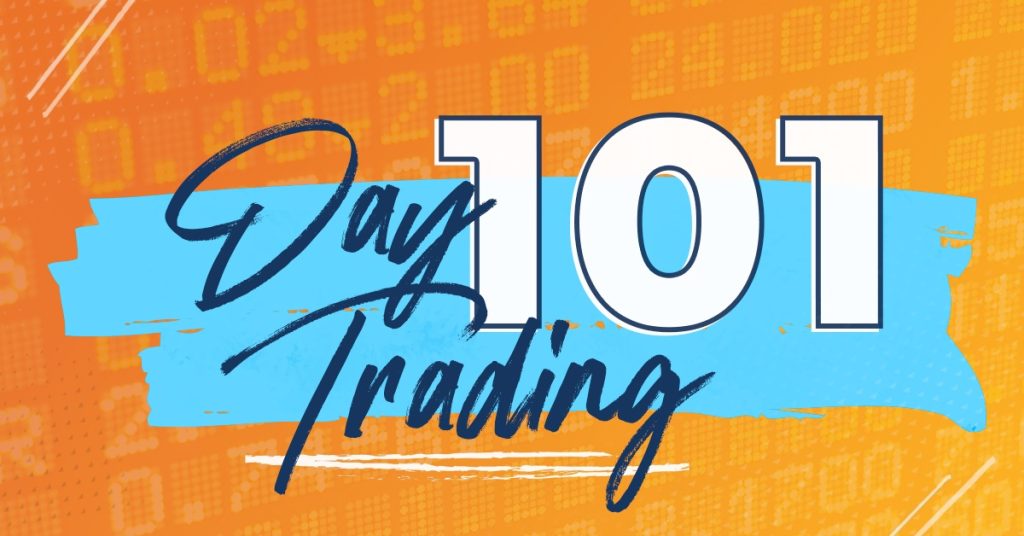Maybe you’ve been talking to a buddy of yours at the gym who’s gotten into a type of investing called day trading. Maybe you’ve got some extra cash and you’re thinking about testing the waters yourself—what could it really hurt?
Well almost every single person we’ve talked to who has gotten into day trading has the same story—and the same tragic ending.
At first, they’re all excited. They’re convinced they can quit their day job and make a fortune buying and selling stocks every single day . . . it seems so easy! But then a few months later, they’re stunned when the losses start piling up and they look up and realize they’ve lost all the money they put into it.
Whenever we hear a story like that, Proverbs 28:20 (NKJV) comes to mind, which says, “he who hastens to be rich will not go unpunished.” Let us be the first to tell you day trading will leave you feeling punished.
Let’s take a closer look at what day trading is, how it works and why you need to stay far, far away from getting caught in that trap!
What Is Day Trading?
Day trading is the act of buying and selling stocks within a very short window of time—we’re talking minutes or hours—with the goal of making a bunch of very small profits that will hopefully add up to big gains over time. A day trader might buy a stock at 9:15 a.m., turn around and sell it at 2:37 p.m. that same day, and then do it all over again with another stock.
The steady rise of online stockbrokers and “do-it-yourself” investing apps makes it very easy for anyone with a smartphone or an internet connection to dabble in day trading . . . but just because it’s easy doesn’t mean it’s smart.
Don’t believe us? Studies have shown that more than 97% of day traders lose money over time, and less than 1% of day traders are actually profitable.1,2 One percent! But of course, nobody thinks they will be the one losing out. It’s like playing a high-stakes poker game: You might win a hand or two here and there, but chances are you’ll leave the table broke and disappointed.
How Does Day Trading Work?
Day traders are not really what you would call “long-term” thinkers. Every day, they’re glued to their computer screens and televisions in order to stay up to date on the news and any trends that might give them hints about which direction a company’s stock will move that day.
Many day traders will buy and sell stocks based on current events—anything from quarterly profit statements to product launches or major announcements. They’re focused on what’s happening right now. Other traders might use sophisticated algorithms or analyze charts to try to figure out when might be the best time to buy or sell.
A day trader tries to make money one of two ways. If a day trader sees that a stock is moving higher or thinks that it might go higher that day, they’ll buy the stock and then sell it once its value goes up. But if the stock’s value drops, then they’ll lose money when they sell it. Pretty straightforward!
On the other hand, if a day trader senses that a stock might take a nosedive that day, they might try to “short sell” it. That’s just a fancy term for betting against the stock. When someone short sells a stock, they profit when the price of a stock goes down.
Market chaos, inflation, your future—work with a pro to navigate this stuff.
With either strategy, day traders are hoping that those stocks will move in the direction they expected them to. They’re not afraid of the stock market’s volatility in the short term. Instead, they want to take advantage of it.
It’s also important to note that many day traders actually borrow money and go into debt to make their trades—they call this “buying on margin” or using “leverage” to buy more stock than they can afford. We call it playing with fire, and it’s a good way to get burned. Not only could you lose all the money you’ve invested, you could end up buried under a pile of debt too. Never, under any circumstances, borrow money to invest.
Here’s Why Day Trading Is a Bad Idea
1. Day trading is extremely risky.
While most investors might shy away from relying solely on stocks that bounce up and down like a pinball in a pinball machine, day traders love these types of stocks because they might be able to make a quick buck off them.
The problem is, it’s almost impossible to predict which direction these stocks will move throughout the day . . . and one wrong guess could lead to hundreds or even thousands of dollars lost on a single bad trade.
And day traders typically end up on the wrong side of a trade more often than not. A study found that traders who lose money account for anywhere between 72–80% of all day trades being made.3 It’s just not worth the risk!
2. Day trading is very expensive.
If you’re a pattern day trader—anyone who makes four or more “day trades” (that’s when you buy and sell a stock on the same day) within five business days—you have to follow certain rules set by the Financial Industry Regulatory Authority (FINRA).
That means you must have at least $25,000 in the brokerage account you trade with in order to keep day trading—that’s not exactly chump change!4 If your balance falls below that, you will need to deposit more cash into the account before you can continue trading.
Day trading also typically comes with costly commissions and transaction fees that will eat into any earnings you might wind up getting, so your profits need to be high enough to cover those costs. Oh, and your earnings from day trading will also be subject to short-term capital gains taxes, which is the same rate as your income tax rate.5
3. Day trading comes with a high level of pressure and stress.
There’s a reason why more than 75% of day traders quit within the first two years of trading.6 Investing in the stock market already feels like a roller coaster with all the ups and downs. Day trading amplifies that feeling to an extreme level. It’s more like being on one of those drop tower rides at an amusement park that jerks you up and down over and over again—and you can’t get off.
The emotional and psychological toll of day trading has left behind a trail of long-lasting health issues (both mental and physical), broken marriages and even suicide. Day trading isn’t just dumb—it’s also dangerous.
A Better Way to Invest
Listen to us, when you are day trading, you’re not investing—you’re gambling with your money. It’s reckless, risky and extremely unpredictable. And it’s simply not worth your time.
Day trading is basically a get-rich-quick scheme—plain and simple. Some seminar speaker or YouTuber living in his mother’s basement will try to convince you that day trading is a shortcut to making a fortune. But what they won’t tell you is that there’s a difference between getting rich and building wealth. Building wealth is a marathon, not a sprint—there are no shortcuts!
The best way to invest for the long haul is to exercise a “buy-and-hold” investment strategy. That means you’re buying shares of an investment and then holding on to those shares for a long time. Investors with a buy-and-hold mindset don’t panic or make decisions based out of fear or greed—they know that the stock market always trends up over time, so they know patience and discipline are the keys to successful investing.
So, what should you invest in? We recommend investing 15% of your gross income in good growth stock mutual funds inside of tax-advantaged accounts like your 401(k) and Roth IRA. Since mutual funds are made up of stocks from many different companies, they give you a level of diversification that single stocks don’t.
There’s a reason why most of the millionaires we talked to for our National Study of Millionaires said their 401(k) was the key to their financial success and not a single one of them said single stocks played a big role in their net worth.
Work With an Investment Pro
Here’s the deal: Investing is too important to do with an app. In fact, 68% of millionaires used a financial advisor or investment professional to help them invest and build their wealth!
Our SmartVestor program will connect you with up to five investment pros in your area who can help you get started with investing and walk you through all of your options so that you can make the best choices for your future.
Ready to get started? Find your SmartVestor Pro today!
Read the full article here










